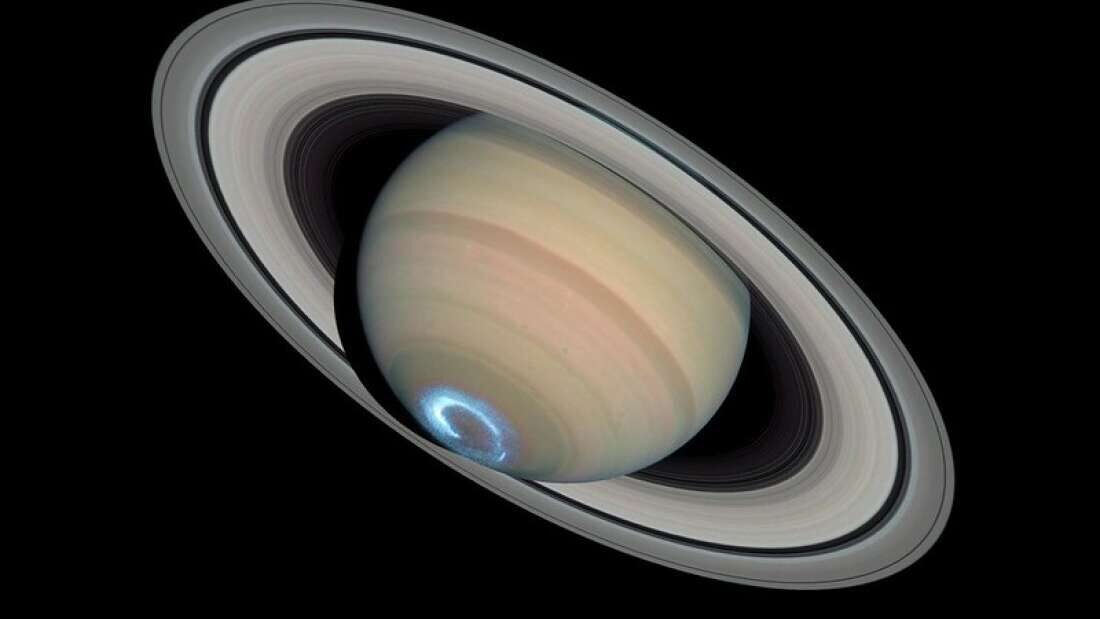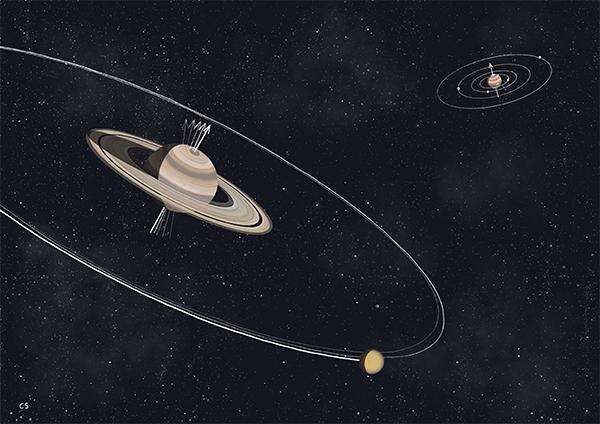
The gas from which the planets formed swirled in the plane of their orbits. Without anything to change them, each should point straight up at right angles to their path around the Sun. The reality is messier. The angle between a planet's equator and its orbital plane is called its obliquity. Mercury, Venus, and Jupiter behave as expected, with obliquity values of just a few degrees, making their seasons almost undetectable. Mars and Neptune have values a little greater than the Earth's 23.4º, while Uranus has flopped over entirely and is rotating sideways, and a little backward, its obliquity an improbable 98 degrees.
The reasons for each tilt are as individual as the planets themselves, and sometimes all is not as it seems. Saturn's obliquity of 26.7º - neatly fitting between Mars and Neptune - isn't unusual, but still requires an explanation. Most astronomers believe the cause lies more than four billion years ago when the Solar System was young and resonance with Neptune's orbit tilted Saturn over. Dr Melaine Saillenfest of Sorbonne Université has challenged that, arguing it's actually happening before our eyes.

Titan's movement is only a few times faster than that - but that's about 100 times faster than was anticipated. An error that large requires some serious rethinking. For one thing, it indicates Titan used to be a lot closer to Saturn itself than was previously thought. Titan is so much larger than any of Saturn's other satellites that its gravity has a substantial effect on the planet, and this must have been even greater back when they were closer.
In Nature Astronomy, Saillenfest and co-authors model Saturn's obliquity under numerous scenarios. They found it is most likely that Saturn stayed close to upright for its first three billion-plus years. Only in the last billion, as Titan's migration sped up, has it become a slowly tilting planet. The other moons, thought to be fleeing outward at a similar pace to Titan, would have provided tugs in the same direction, admittedly much more weakly.
Prediction gets harder as you extend out to the life expectancy of the Sun, but over the next few billion years, Saillenfest concludes Saturn's obliquity will more than double until it will be more on its side than upright. Even Jupiter will undergo a similar passage to eventually reach an obliquity of 30º, as its own large moons clear the vicinity. Uranus, it seems, is quite the trendsetter.
If Saillenfest is right, astronomers have good reason to thank Titan. Saturn's rings encircle the equator. If its obliquity was lower, they would be nearly edge-on from our perspective, and hard to see via backyard telescopes.



Reader Comments
Why would a planet not be a sentient being?